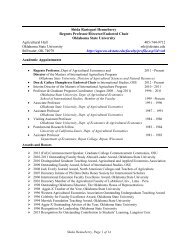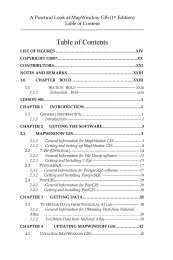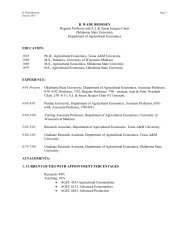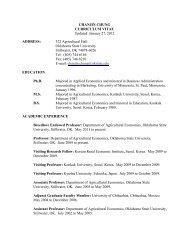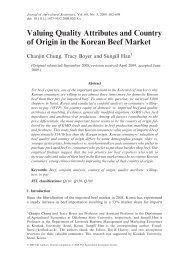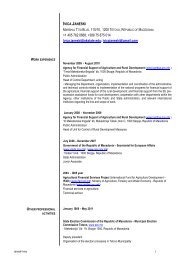Aggregate versus Disaggregate Data in Measuring School Quality
Aggregate versus Disaggregate Data in Measuring School Quality
Aggregate versus Disaggregate Data in Measuring School Quality
You also want an ePaper? Increase the reach of your titles
YUMPU automatically turns print PDFs into web optimized ePapers that Google loves.
Outcomes with and without measurement error are compared <strong>in</strong> order to see if the<br />
aggregate estimator is <strong>in</strong> fact more robust to errors <strong>in</strong> measurement than the disaggregate<br />
estimator. The parameters used to randomly generate the number of students <strong>in</strong> each school are<br />
also changed, to see how variability <strong>in</strong> school size affects the performance of the estimators.<br />
3. Results<br />
Table 1 shows the first set of results for 1000 samples, each of 100 schools whose size is<br />
distributed lognormal with mean 120 and variance 50000. Accord<strong>in</strong>g to this distribution, about<br />
70% of schools have sizes between 15 and 250 students. As expected, the disaggregate estimator<br />
performs best on almost all measures. The aggregate estimator’s performance, however, is very<br />
good, and clearly above the OLS estimator’s performance. OLS tends to pick small schools as<br />
the top schools. The average school size for the top ten schools as estimated by OLS is about<br />
102, while the true average for this group is 120. OLS estimators are based on residuals whose<br />
2 2<br />
variance is σ + σ / n . So, quality estimates for small schools will have a larger variance and<br />
u<br />
e<br />
will be more likely to be either at the bottom or top of the rank<strong>in</strong>gs. However, table 1 shows that<br />
both the aggregate and disaggregate estimators tend to pick large schools as the top schools so<br />
they are also a biased predictor of top schools.<br />
The aggregate and disaggregate estimators have a shr<strong>in</strong>kage factor reduces the residuals<br />
of small schools. Recall the shr<strong>in</strong>kage factor is<br />
2<br />
σ u<br />
2 2<br />
σ u + σ e / n<br />
15<br />
. This factor is always less than one, but<br />
decreases with school size, br<strong>in</strong>g<strong>in</strong>g down the absolute value of small school residuals. Results <strong>in</strong><br />
table 1 suggest that the shr<strong>in</strong>kage factor may over-compensate for the residuals effect, and thus,<br />
leave ma<strong>in</strong>ly large schools <strong>in</strong> the extremes. Estimators with a smaller shr<strong>in</strong>kage factor (the factor






